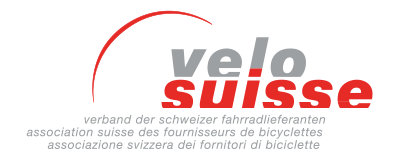The bike stores are full again
2022, it was finally possible to make up for the delivery backlogs caused by Corona. This gave e-bike deliveries in particular another healthy 17 percent increase to a new record high of 218730 units. Compared with the previous year, however, the total bicycle market shrank for the second time in succession by 2 percent (2021 -1.5 percent) to 483562 units. Once again, the reduction was entirely at the expense of the pure muscle bike. Soon, every second bicycle sold will be an e-bike.
(SFVE) As a reminder, the development of the bicycle market in the last 24 months: The momentum that had continued into the 2021 half-year figures after the record year of 2020 flattened out as the year progressed due to delivery difficulties. While the first six months saw a 16.5 percent increase in sales of e-bikes and an 8.9 percent rise in sales of bicycles, by the end of the year growth rates had fallen to 9.4 percent for e-bikes. For bicycles, the figures even turned negative (-7.4 percent) to 306524 units.
2022 also got off to a subdued start in the first half of the year. From the middle of the year, however, the market situation normalized visibly and the backlog of orders was made up, in some cases like an avalanche. By the end of the year, 218730 e-bikes had been delivered to the market, an increase of 17 percent compared with 2021. The picture is not quite as rosy for purely muscle-powered bikes, of which 264832 units were delivered. This means that the sales ratio of bicycles to e-bikes in Switzerland is now 55 to 45 percent. It is foreseeable that soon every second bicycle sold will be an e-bike.
What should please end customers: Prices for transport and raw materials, which reached exorbitant spheres during the Corona period, have now returned to normal. This is also having an impact on vehicle prices. Significant downward price corrections can already be observed, especially in the top segment.
The bicycle as a means of transport
Within the various segments, there are some striking shifts. Among bicycles, the run on high-quality road bikes and gravel bikes is striking. The latter even more than doubled their sales figures, while the sales figures for mountain bikes fell, in some cases significantly. In the e-bike segment, the shift from e-MTBs to SUV e-bikes and crossover e-bikes (which were included in a separate category for the first time) was further accentuated. SUV e-bikes are suspension e-mountain bikes with complete city bike equipment (including mudguards and luggage racks). This has now resulted in fewer e-MTBs being sold than in the previous year for the first time. The previous year's boom in e-road bikes and gravel e-bikes also flattened out significantly. The fully equipped city e-bikes, on the other hand, once again made significant gains and now account for the lion's share of electric leisure, city and everyday bikes with just under 70,000 units.
Looking across all product groups, one trend can be identified: The bicycle boom that Switzerland experienced during the Corona era is reverberating. It is reflected in purchasing behavior and thus also in use. People still like to use the bicycle for leisure. However, more and more people are discovering it as a practical means of transport, preferably in cities and conurbations, thanks to the e-bike. Studies have shown that the distances covered by e-bike riders are around three times longer than those covered by cyclists. The frequency of use is also about twice as high. An adequate bicycle infrastructure will therefore be of central importance in the future if even more people are to benefit from this climate- and resource-friendly, health-promoting and space-saving means of transport. Velosuisse therefore welcomes the fact that the law on cycle paths finally came into force at the beginning of 2023.
March 17, 2023
